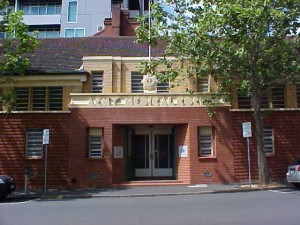
- This event has passed.
OPEN HOUSE MELBOURNE
July 31, 2022 @ 10:00 am - 4:00 pm
Event Navigation

On Sunday 31st of July, as part of Open House Melbourne, we will be offering free guided tours of the Australian Army Medical Corps Drill Hall which is now home to the RHSV and several performing arts companies.
In light of the upsurge in COVID cases we ask that everyone taking a tour wears a mask. We will have masks available if people forget. This is an OH&S decision by the RHSV Council to protect our staff and volunteers in their workplace.
Our wonderful building is an art deco masterpiece built in 1938 as Australia and the rest of the world readied themselves for another world war.
From 10am until 4pm we will be offering guided tours every 30 minutes (starting at 10am, 10:30am etc). We will also have tea/coffee on tap for those of you rushing around on a tight schedule.
The featured materials in this late 1930s art deco building are high quality brick and plaster work with strong vertical and horizontal lines, fluted pilasters, arches, keystones, coffered ceilings, built-in seats and Dutch (or stable) doors. Many of the original features are still in place.
Functional and utilitarian, the building has two large drill halls with offices along their northern side. The halls are separated by a public entrance foyer which leads off A’Beckett Street. Messes are placed at the centre – for sergeants – and at the east and west ends of the building – for ‘other ranks’ and officers respectively.
The drill hall had a number of functions: as an indoor parade ground for marching and equipment drill; a gymnasium and for physical training; a social centre offering activities such as dances, film nights etc, and for displays. The mezzanine (the ceiling of a row of offices) allows for observation of the activities on the floor of the hall. The ceiling design itself is reminiscent of suburban cinemas of the time.
By 1990 the Army Medical Corps Drill Hall had been added to the Historic Building register for its state-wide architectural and historical significance. The western end of the building became the premises of the Royal Historical Society of Victoria in August 1999.




 239 A'Beckett Street Melbourne, Victoria, 3000
239 A'Beckett Street Melbourne, Victoria, 3000  03 9326 9288
03 9326 9288  office@historyvictoria.org.au
office@historyvictoria.org.au  Office & Library: Weekdays 9am-5pm
Office & Library: Weekdays 9am-5pm

